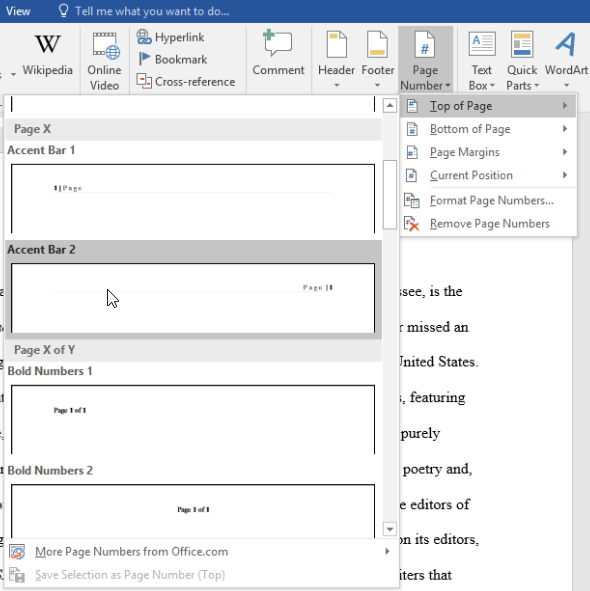

This is when a page break is most useful.Ī section break for MS Word is useful for visually distinguishing parts of a document. The title page, copyright page, table of contents, individual chapters, index, etc., would be separate sections.įor example, you usually want a new chapter of a book (or similar) document to begin on a new page. In a book, you'd use section breaks to divide it into chapters as well as delineate the front matter from the back matter. Section and page breaks are useful for partitioning different parts of a document, especially a long one. Why Use Microsoft Section and Page Breaks? The text after a Microsoft Word page break is automatically placed at the top of the next page.īut, with a section break for Word the text is partitioned - along with the formatting associated with it:Īlso, a Microsoft Word section break may or may not begin on a new page (more on that below). At a page break, the succeeding text is automatically placed on top of a new page. Microsoft Word Section Break vs Page BreakĪ page break is a partition in the text of the document. In this section, you'll learn some basics: 1. Section and page breaks are types of breaks or partitions in a Word document. Finally, we'll show you some great sources for professionally designed Word templates.
CREATE NEW SECTION HEADER AND FOOTER WORD FOR MAC HOW TO
Read on to learn how to use section and page breaks in Word to make your document more visually appealing and easier for readers to make their way around. You’ll also have better control over pagination. Understanding page breaks and sections breaks is an important part of learning MS Word (Image source: Envato Elements)Īs you’ll see in this article by defining section and page breaks you can apply specific formatting elements in different parts of your document. Microsoft Word eases your workflow by letting you define document breaks, namely section and page breaks. So I type my header into the top of the second page and click Close.When you’re working on a long document, separating it into different parts makes it much easier to navigate. In this example, I only want headers on the pages after the first page. The top and bottom of your document are revealed for editing, along with some information and a Close button in blue boxes. ( If your document has sections, you’ll need to experiment here.) Click OK.Ĭlick the View menu and select Header and footer. Under “Headers and footers” check “Different first page.” Make sure this applies to the whole document.
The Document dialog displays.Ĭlick the Layout tab of the Document dialog. If you’re on Windows, this short procedure may still be helpful.Ĭlick the Fromat menu and select Document.

Instead of ribbons, we can still use menus. If you’re using Apple’s OSX, you’re in luck.

Then they further obfuscate it with “ribbons” of tools that change with every release, and with confusing online help. Microsoft manages to bury this seemingly simple task far away from the creation of headers and page numbers. A typical manuscript formatting requirement is to number all your pages except for the first one.


 0 kommentar(er)
0 kommentar(er)
